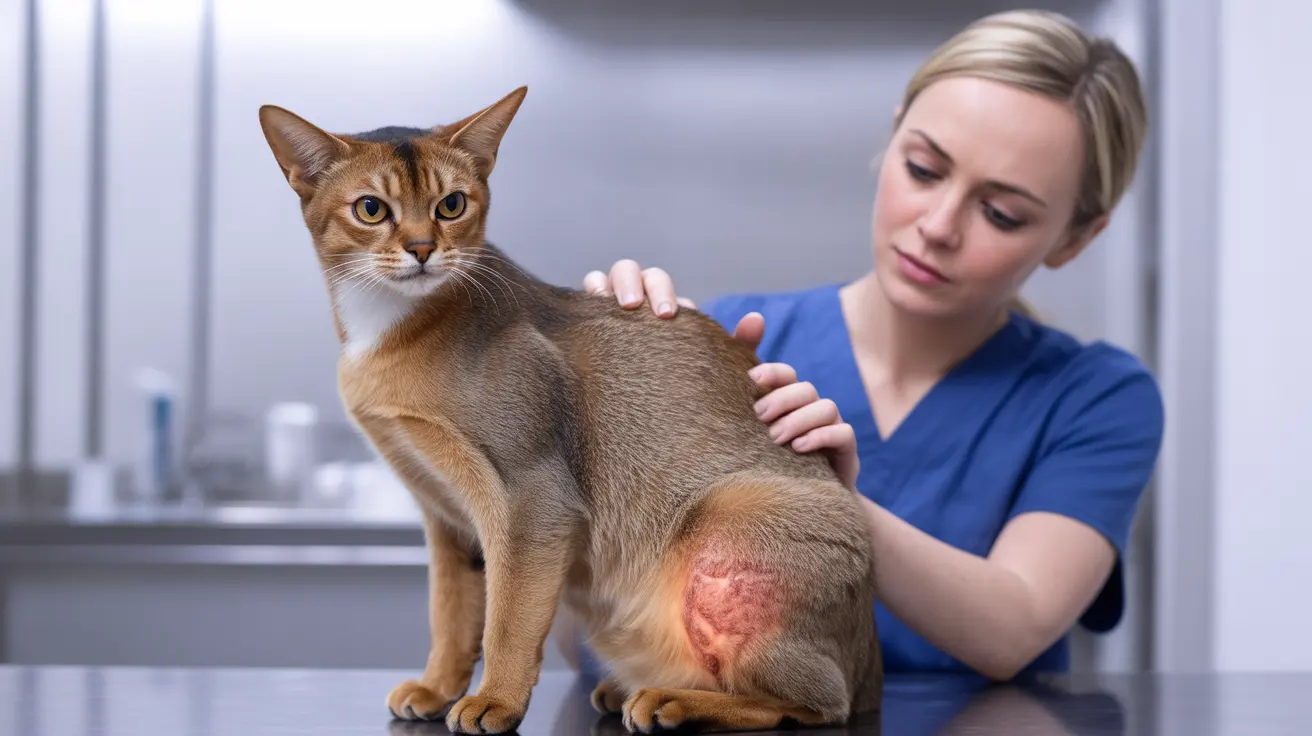If you've noticed your cat's butt is red, you're likely concerned about your feline friend's health. This common condition can range from a minor irritation to a sign of more serious health issues. Understanding the causes, symptoms, and treatment options is crucial for ensuring your cat's wellbeing.
As responsible pet owners, it's important to recognize that a red bottom in cats isn't normal and usually indicates some form of inflammation or irritation that requires attention. Let's explore the various causes and solutions to help your cat feel comfortable again.
Common Causes of Anal Redness in Cats
Parasitic Infections
Internal parasites like tapeworms, roundworms, and hookworms frequently cause anal irritation and redness. These unwanted guests can lead to intense itching and inflammation around your cat's posterior region, often accompanied by visible tapeworm segments that look like rice grains near the anus.
Gastrointestinal Issues
Digestive problems, particularly diarrhea, can result in frequent wiping and irritation of the anal area. Whether caused by dietary changes, food sensitivities, or infections, loose stools can quickly lead to inflammation and discomfort.
Allergic Reactions and Skin Conditions
Allergies are a common culprit behind red, irritated bottoms in cats. Food allergies, environmental allergens, and flea bite sensitivities can all trigger inflammation. Your cat may excessively groom the area, potentially leading to hair loss and further irritation.
Anal Gland Problems
Cats have two small anal glands that can become impacted, infected, or abscessed. These conditions often result in:
- Visible redness and swelling
- Scooting behavior
- Excessive licking of the area
- Difficulty or pain during defecation
When to Contact Your Veterinarian
Seek immediate veterinary care if you notice:
- Persistent or worsening redness
- Blood in the stool
- Pus or discharge
- Significant behavior changes
- Loss of appetite
- Signs of pain or discomfort
Treatment Options and Home Care
While veterinary diagnosis is essential, some supportive care measures can help your cat feel more comfortable:
- Keep the area clean and dry
- Use pet-safe wipes recommended by your vet
- Monitor for changes in stool consistency
- Maintain regular parasite prevention
- Feed a balanced, high-quality diet
Prevention Strategies
Preventing anal irritation involves several key practices:
- Regular deworming
- Consistent flea prevention
- Proper diet management
- Regular veterinary check-ups
- Maintaining a clean litter box
Frequently Asked Questions
Why is my cat's butt red, and what could be causing it?
A red bottom in cats can be caused by various factors including parasites, allergies, anal gland problems, infections, or gastrointestinal issues. The specific cause requires veterinary diagnosis for appropriate treatment.
How can I tell if my cat has anal gland issues versus other health problems?
Anal gland issues typically present with scooting behavior, excessive licking of the area, and a distinctive odor. However, only a veterinary examination can definitively diagnose the specific condition.
What are the best ways to prevent anal gland problems in cats?
Maintain a healthy diet with adequate fiber, ensure regular veterinary check-ups, and address any constipation or diarrhea promptly. Some cats may benefit from regular anal gland expression by a professional.
How do I treat a cat with a red butt due to allergies or parasites?
Treatment depends on the underlying cause. Parasites require appropriate deworming medication, while allergies may need dietary changes, antihistamines, or other medications prescribed by your veterinarian.
What are the signs indicating that my cat needs immediate veterinary attention for their red butt?
Seek immediate veterinary care if you notice severe swelling, bleeding, pus, behavioral changes, loss of appetite, or signs of pain. These symptoms could indicate serious conditions requiring prompt treatment.
Conclusion
While a red bottom in cats can be concerning, understanding the potential causes and knowing when to seek veterinary care is crucial for your pet's health. Most conditions are treatable when caught early, so don't hesitate to consult your veterinarian if you notice any unusual changes in your cat's anal area.






